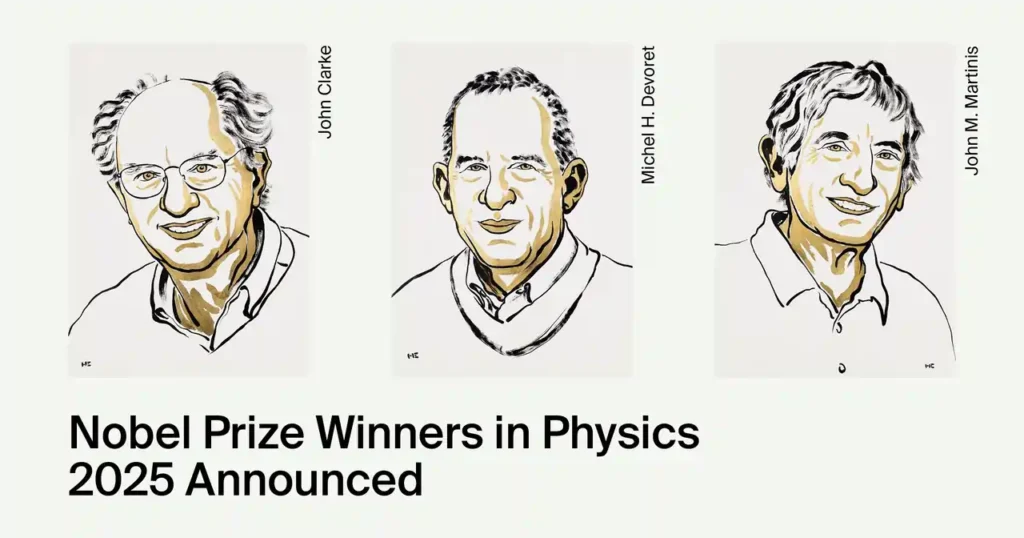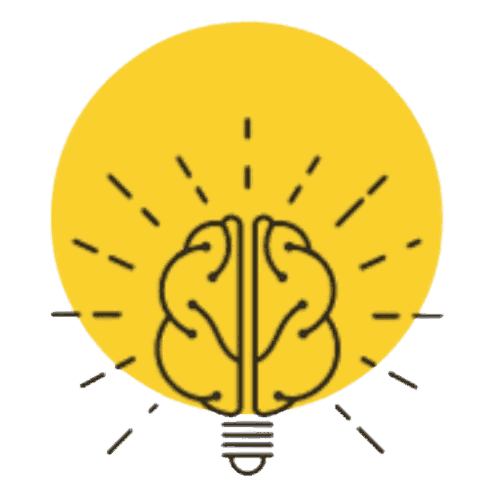New Delhi: On October 7, 2025, the Royal Swedish Academy of Sciences awarded the 2025 Nobel Prize in Physics to three American scientists—John Clarke, Michel Devoret, and John Martinis—for their groundbreaking discoveries in quantum mechanics, specifically “for the discovery of macroscopic quantum mechanical tunnelling and energy quantisation in an electric circuit.” This prestigious award, valued at 11 million Swedish kronor (approximately $1.17 million), will be shared equally among the laureates and presented in Stockholm on December 10, the anniversary of Alfred Nobel’s death. The recognition highlights their revolutionary work demonstrating that quantum properties, once thought exclusive to atomic scales, can manifest in systems large enough to hold in your hand, paving the way for advancements in quantum computing and beyond.

Redefining Quantum Limits
The core question driving their research was the maximum size a system could reach while still exhibiting quantum behavior. Quantum mechanics, the science governing how particles behave at the smallest scales, describes phenomena like wave-particle duality, where tiny objects act as both particles and waves, and quantum tunnelling, where particles pass through physical barriers. Historically, these effects were observed only at microscopic levels, such as atoms or sub-atomic particles. However, Clarke, Devoret, and Martinis, through experiments conducted in the mid-1980s at the University of California, Berkeley, proved that quantum mechanics could operate on a macroscopic scale.
Their work focused on an electric circuit featuring a Josephson junction—a setup with two superconducting components separated by a thin insulating layer. Superconductors, under specific conditions, allow electricity to flow without resistance, a phenomenon rooted in quantum behavior where electrons move as a unified wave. In their experiments, the trio demonstrated that the entire circuit exhibited quantum properties: it could only exist in discrete energy states, corresponding to specific current values, a process known as energy quantisation. Additionally, the circuit could “jump” between these states across the insulating barrier, showcasing macroscopic quantum tunnelling.
The Experimental Milestone
The laureates’ breakthrough built on earlier work by Brian Josephson, whose 1973 Nobel Prize recognized the tunnelling effect in superconductor-insulator-superconductor setups. Influenced by predictions from physicist Tony Leggett, another Nobel laureate, Clarke (a professor), Devoret (a postdoctoral fellow), and Martinis (a PhD candidate) meticulously designed their experiments to isolate the circuit from environmental interference, which could disrupt quantum effects. Their success in observing quantum behavior in a system involving billions of particles was unprecedented, answering a fundamental question about the scalability of quantum mechanics and setting the stage for future technologies.
Rajamani Vijayraghavan, an associate professor at the Tata Institute of Fundamental Research and a former student of Devoret, emphasized the significance: “From a fundamental physics perspective, it provided the first clear answer to the question of how large a system can be while still exhibiting quantum behaviour.” He noted that while the discovery initially flew under the radar, its importance grew as its implications for quantum technology became clear.
Impact on Quantum Technology
The trio’s work has far-reaching implications, particularly for quantum computing, which leverages quantum principles to perform calculations exponentially faster than classical computers. Their superconducting circuits are now a leading platform for creating quantum bits (qubits), the building blocks of quantum information processing. The discoveries also advance quantum sensors for precise measurements and next-generation transistors for computer microchips, enhancing the efficiency of modern electronics. As John Clarke noted, “In some ways, [this] is the basis of quantum computing,” and he connected their research to everyday technologies, stating, “One of the underlying reasons that cellphones work is because of all this work.”
Olle Eriksson, chair of the Nobel Committee for Physics, praised the laureates for revealing how “century-old quantum mechanics continually offers new surprises.” He underscored that quantum mechanics is the “foundation of all digital technology,” highlighting its critical role in innovations like quantum cryptography and sensors.
Laureates’ Reactions: A Stunning Honor
The announcement took the winners by surprise. John Clarke, a British-born professor at the University of California, described it as “the surprise of my life” during a telephone interview at the Nobel news conference. “I’m completely stunned. Of course it had never occurred to me in any way that this might be the basis of a Nobel Prize,” he said, lauding his colleagues’ “overwhelming” contributions. Michel Devoret, a French-born professor at Yale University and the University of California, and John Martinis, also at UC, share the honor for their collaborative efforts.
A Storied Nobel Tradition
The Nobel Prize in Physics, one of the most prestigious awards in science, has a rich history of recognizing transformative discoveries. Past laureates include Albert Einstein, Pierre and Marie Curie, Max Planck, and Niels Bohr, a pioneer of quantum theory. The 2024 prize honored John Hopfield and Geoffrey Hinton for their contributions to machine learning, which spurred the artificial intelligence boom. This year’s award continues the tradition, celebrating how fundamental physics research fuels technological progress.
The physics prize is the second Nobel announced in 2025, following the medicine prize awarded to Mary E Brunkow, Fred Ramsdell, and Shimon Sakaguchi for their work on the human immune system. Upcoming awards in chemistry, literature, peace, and economics will follow, with the peace prize ceremony held in Oslo and the others in Stockholm, where laureates receive gold medals from the Swedish king.
A Legacy for the Future
The 2025 Nobel Prize in Physics not only honors Clarke, Devoret, and Martinis for their transformative experiments but also inspires ongoing research into quantum technologies. Their work has redefined the boundaries of quantum mechanics, showing that its principles can scale to macroscopic systems and drive innovations in computing, sensing, and electronics. As the world continues to explore the quantum frontier, this Nobel recognition underscores the power of curiosity-driven science to shape our technological future.
FAQs
1. Who won the 2025 Nobel Prize in Physics, and what was it awarded for?
The 2025 Nobel Prize in Physics was awarded to John Clarke, Michel Devoret, and John Martinis, three US-based scientists, for their discovery of macroscopic quantum mechanical tunnelling and energy quantisation in an electric circuit. Their work demonstrated that quantum properties, typically observed at atomic scales, can manifest in larger systems, such as a circuit big enough to hold in your hand.
2. What is quantum tunnelling, and why is it significant in this context?
Quantum tunnelling is a phenomenon where particles pass through physical barriers, defying classical physics. The laureates showed this could occur in a macroscopic system using a Josephson junction, a circuit with two superconductors separated by an insulator. This breakthrough expanded our understanding of quantum mechanics’ scalability and laid the groundwork for technologies like quantum computers.
3. How did the winners’ experiments work?
In the mid-1980s at UC Berkeley, Clarke, Devoret, and Martinis used a Josephson junction circuit, featuring two superconductors separated by a thin insulating layer. They isolated the setup to avoid environmental interference and observed that the circuit exhibited quantum behavior, existing only in discrete energy states and jumping between them via tunnelling, confirming quantum effects at a macroscopic scale.
4. What are the practical implications of their discovery?
The discovery has driven advancements in quantum computing, where superconducting circuits are used to create quantum bits (qubits). It also supports the development of quantum sensors for precise measurements and next-generation transistors for microchips, impacting technologies like cellphones and other digital devices.
5. Why was this discovery a surprise, and how does it fit into the Nobel legacy?
John Clarke called the award “the surprise of my life,” as the significance of their 1980s work became clear only later with the rise of quantum technology. The Nobel Prize in Physics, with past winners like Albert Einstein and Niels Bohr, honors transformative discoveries. The 2025 award continues this tradition, highlighting quantum mechanics’ role as the foundation of modern digital technology.

